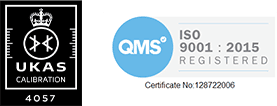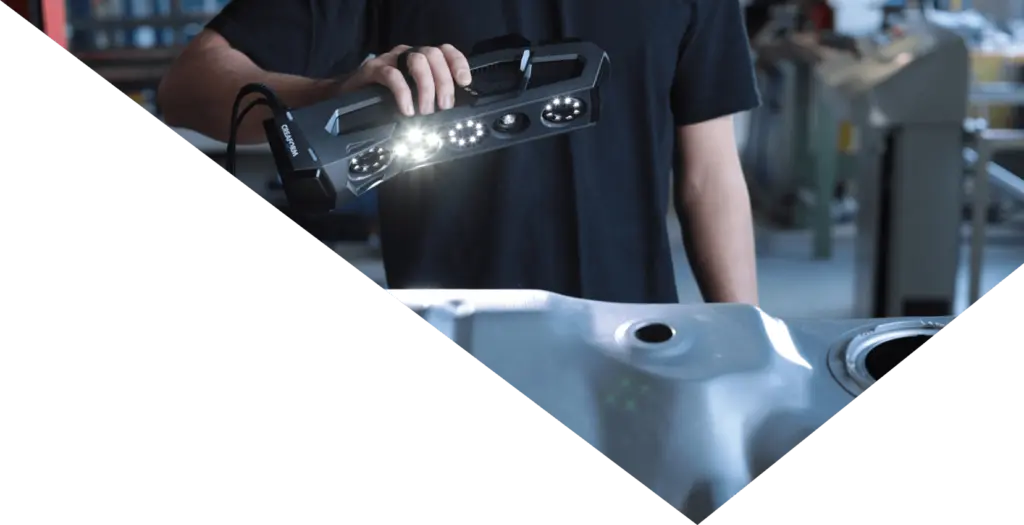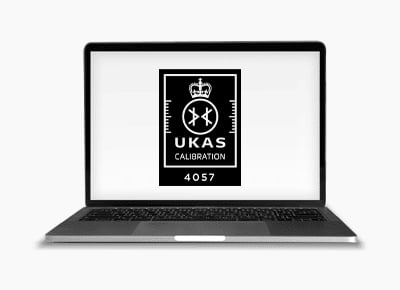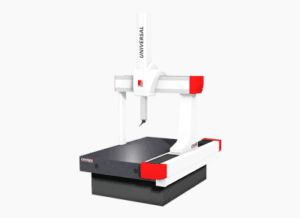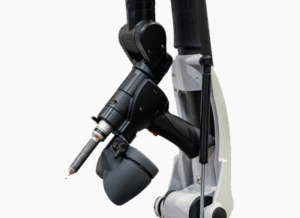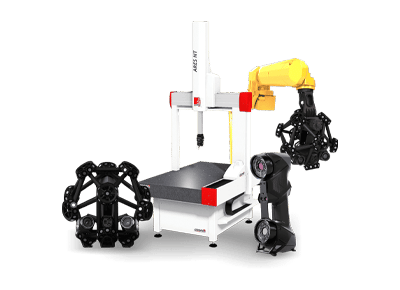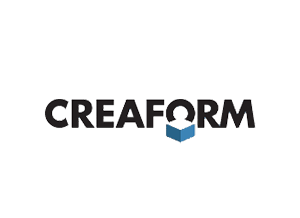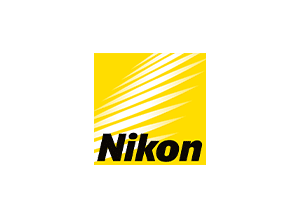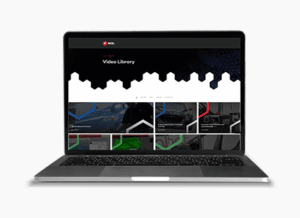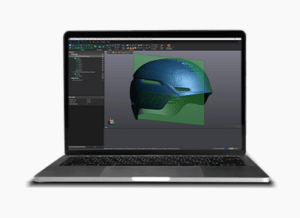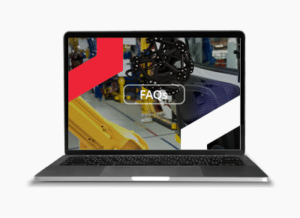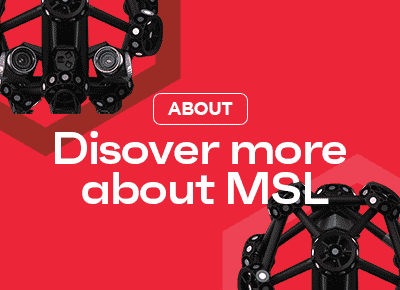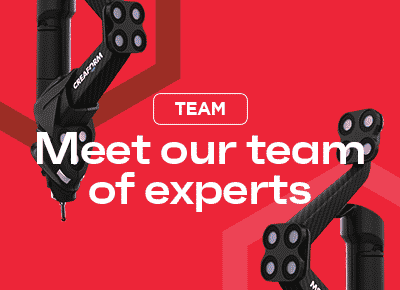The Creaform HandySCAN 3D|MAX Advantage
The marine sector is no stranger to challenges, from intricate ship designs to complex underwater structures. In such a demanding environment, precision and efficiency are paramount. Traditional methods of measurement and inspection often fall short, leading to delays, errors, and increased costs, however, 3D scanning technology uncovers a new era of possibilities.
Central to this is the Creaform HandySCAN 3D|MAX, which combines the portability, accuracy, speed, and simplicity, which are inherent to the HandySCAN 3D line-up, but the new MAX Series is optimised to acquire highly accurate 3D measurements on large and complex parts typically present in the marine sector.
Engineered to capture fine details and scan large volumes equally well, the HandySCAN 3D|MAX Series enables professionals to measure large parts and assemblies in a simpler scanning process, resulting in high-quality 3D scans in just a matter of minutes. In this blog, we’ll look at the application of 3D scanning in the marine sector, highlighting Creaform’s solutions, application examples, and how they address common challenges.

Understanding 3D Scanning
Before looking into specific marine applications, let’s briefly understand what 3D scanning entails. 3D scanning is a non-contact, non-destructive technology that captures the shape of physical objects using laser or structured light. It creates precise digital replicas, known as point clouds, which can be used for various purposes such as reverse engineering, quality control, and virtual simulation.
Tailored for the Marine Sector’s Demands
Shipbuilding, with its intricate designs and mammoth structures, requires a level of precision that cannot be compromised. The HandySCAN 3D| MAX, with its renowned capability for capturing highly detailed digital representations of physical objects, presents a perfect fit for the sector. It enables the creation of comprehensive digital models of vessels, components, and intricate frameworks, seamlessly integrating with computer-aided design (CAD) software.
This integration not only streamlines the design and engineering process but also enhances the capability to identify potential issues and optimise designs with unprecedented efficiency. Digital prototyping becomes a swift, iterative process, allowing for rapid refinements and ensuring that designs reach production floors in their most perfected form.

Ensuring Precision and Safety
The HandySCAN 3D|MAX’s ability to facilitate precise dimensional analysis guarantees that components are manufactured to exact specifications. This is particularly critical in shipbuilding, where minor discrepancies can significantly impact vessel performance and safety. Its contribution to real-time quality control during construction phases underscores its value, enabling swift identification and rectification of discrepancies, and minimising the risks of errors and costly rework.
Maintenance, Repair, and Retrofitting
Beyond construction, the HandySCAN 3D|MAX proves indispensable in maintenance, repair, and retrofitting operations. Its ability to create accurate digital archives of existing vessels ensures that structural integrity can be thoroughly assessed, and signs of wear or damage can be detected early, allowing for precision in planning necessary repairs or modifications.
Enhancing Collaboration Across the Shipbuilding Lifecycle
One of the more understated yet vital benefits of the HandySCAN 3D|MAX is its role in facilitating seamless collaboration among all stakeholders in a shipbuilding project. 3D scanning streamlines the shipbuilding process by capturing precise measurements of hulls, propellers, and other components. It allows for quick and accurate assessment of damage, facilitating timely repairs and maintenance, by optimising workflows and minimising downtime.
From designers and engineers to manufacturers and operators, the technology fosters a level of communication and data sharing previously unattainable, enhancing synergy and streamlining the completion of projects.
Offshore Structures Inspection
Offshore platforms and pipelines are subjected to harsh environmental conditions, requiring regular inspection to detect corrosion, deformation, or fatigue. 3D scanning offers a comprehensive solution for assessing structural integrity and identifying potential issues before they escalate. The HandySCAN 3D|MAX excels in capturing detailed surface data, even in challenging offshore environments.
Marine Archaeology
Underwater archaeology relies heavily on accurate documentation of submerged artefacts and archaeological sites. Traditional methods, such as manual measurements and photography, are often time-consuming and prone to inaccuracies. 3D scanning provides archaeologists with detailed 3D models of underwater relics, allowing for precise analysis and preservation efforts.
Dock and Port Infrastructure Monitoring
3D scanning technology is revolutionising the way we monitor the structural integrity of docks, piers, and other port infrastructure. Here’s how it works:
Initial Scan: Engineers conduct an initial 3D scan of the entire structure using specialised scanning equipment. This scan captures precise measurements and creates a detailed digital model of the infrastructure.
Regular Scanning: Regular scanning intervals are established depending on factors like the age of the structure, environmental conditions, and usage. These intervals could be monthly, quarterly, or annually.
Comparison and Analysis: Each subsequent scan is compared to the initial model. Advanced software analyses the differences between scans, detecting even minor changes in the structure’s geometry.
Early Detection of Issues: By monitoring changes over time, engineers can detect potential issues such as structural deformations, cracks, or erosion. Even small changes that are invisible to the naked eye can be identified early.
Preventive Maintenance: Early detection allows for timely intervention. Engineers can address developing problems before they escalate into major issues, preventing costly repairs, downtime, or even accidents.
Data Visualisation: The data collected from 3D scans can be visualised in various ways, including heat maps showing areas of concern, deformation analysis, and stress simulations. This helps engineers make informed decisions about maintenance and repairs.

Benefits of Utilising 3D Scanning in the Marine Sector
- Early Detection: Identifying issues early prevents costly repairs and ensures the safety of port operations.
- Precision: 3D scanning provides highly accurate measurements, enabling engineers to detect even subtle changes in structure.
- Cost Savings: Preventive maintenance based on 3D scans is far more cost-effective than reactive repairs.
- Safety: Regular monitoring enhances safety for workers and vessels by ensuring the structural integrity of the infrastructure.
- Customisation: Vessel components can be tailored precisely to fit specific requirements, improving performance and efficiency.
- Speed: 3D Scanning and printing significantly reduces the time required for custom component fabrication compared to traditional methods.
- Quality Assurance: Rapid prototyping allows engineers to thoroughly test components before full-scale production, ensuring quality and reliability.
Conclusion
As the marine sector continues to navigate towards more sophisticated and efficient horizons, the HandySCAN 3D|MAX stands as a pivotal technological ally. Its unparalleled accuracy, adaptability to complex structures, and facilitation of seamless design, construction, and maintenance processes define it as the ideal 3D scanning solution for the marine sector. With the HandySCAN 3D|MAX, the future of shipbuilding will not just be innovative but revolutionised.

